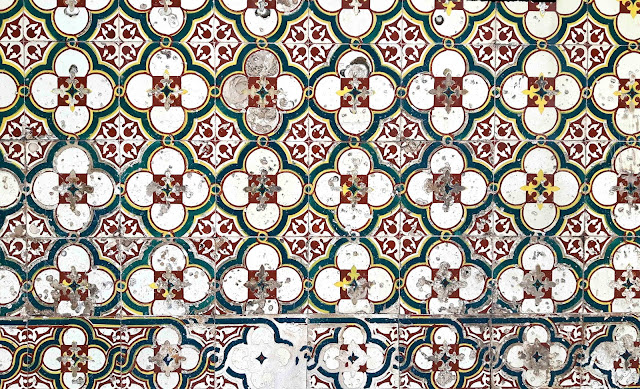There is a perception that patchwork is built from completely random fabric selections, and of course this can be true. Whilst I thrive on the aspects of my working process that I can't control and am spontaneous with much of the decision making, I am aware that the designer in me is constantly assessing the relationships and impact that my choices are creating - mine is a very conscious enjoyment of serendipity. At the same time I continue to challenge the idea of co-ordination, exploring how my western perspective (shaped by the visual indoctrination of countless styling shoots and retail visual merchandising concepts) influences my choices. I am striving to free myself, to be open to pattern and colour combinations that express different perspectives.
I was lucky enough to wander the streets of Porto this Easter. The tiled building frontages of many of its buildings would be appealing to most, but are especially so for those involved in pattern creation! They represent an array of block repeat designs that nod to different eras and demonstrate brilliantly what a well-considered repeat unit can visually do.
Not surprisingly, given that my own work is involved with material journeys and the aesthetics of imperfection, the frontages I found most inspiring were those whose surfaces evidenced the passage of time, through chips, erosion and repair. Differing production methods, nature and vandalism all contributed to irregularities, modified colour stories and interrupted visual rhythms. Amongst these were also wonderfully cheeky pattern-patches! They are evidence of a mind-set (or a moment in time) where the necessity for blending in, discretion, conformity and perfection was given short shrift - very refreshing!



















What lovely photographs. Thank you.
ReplyDelete